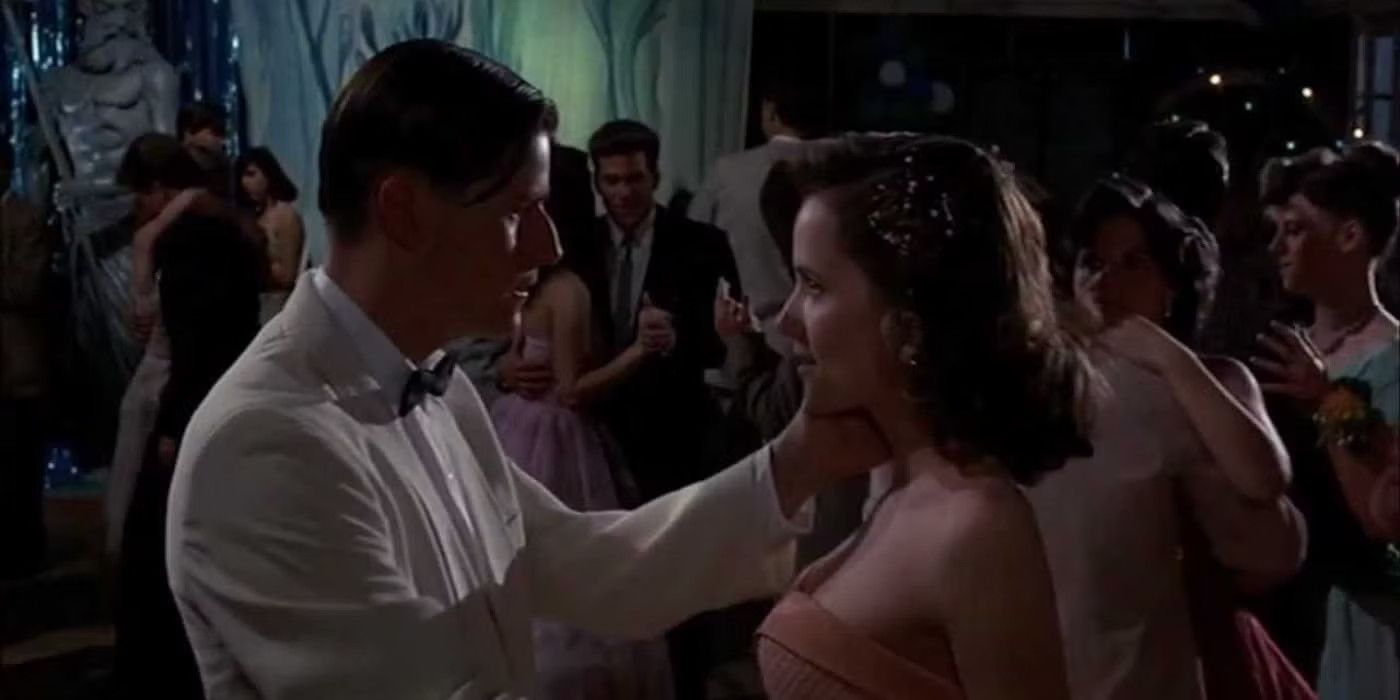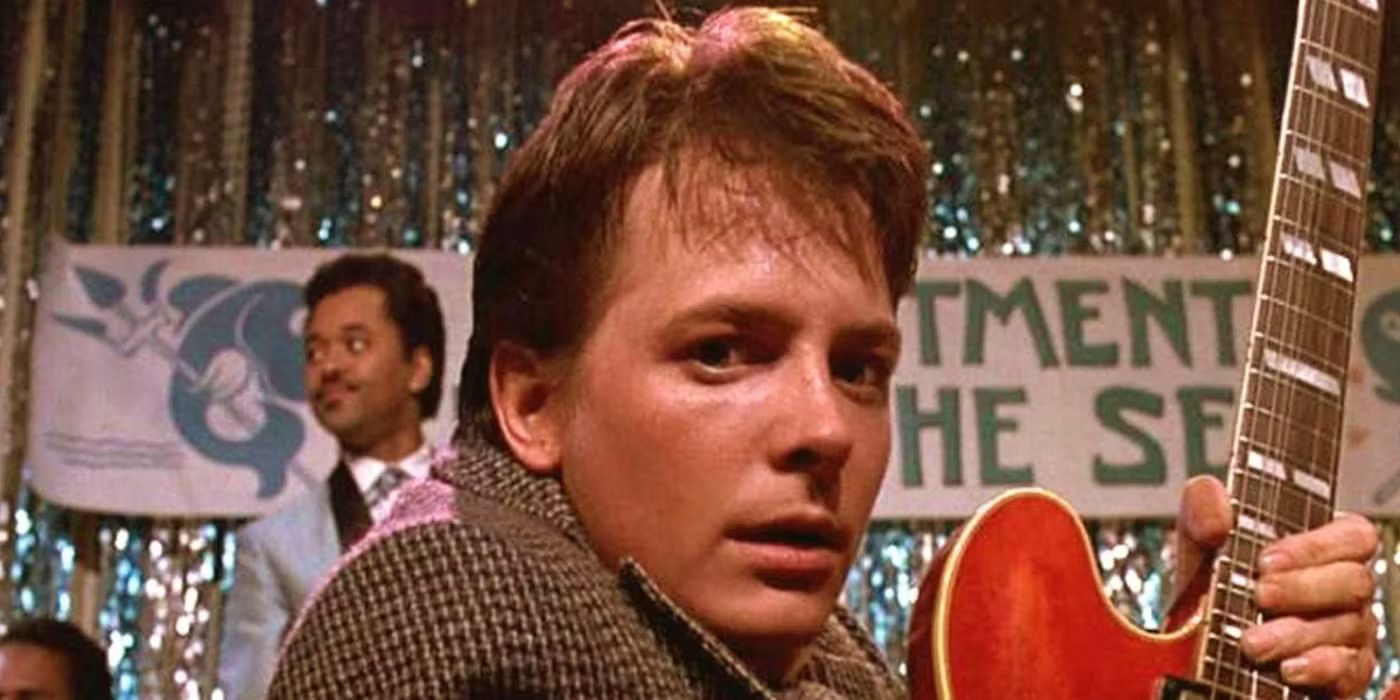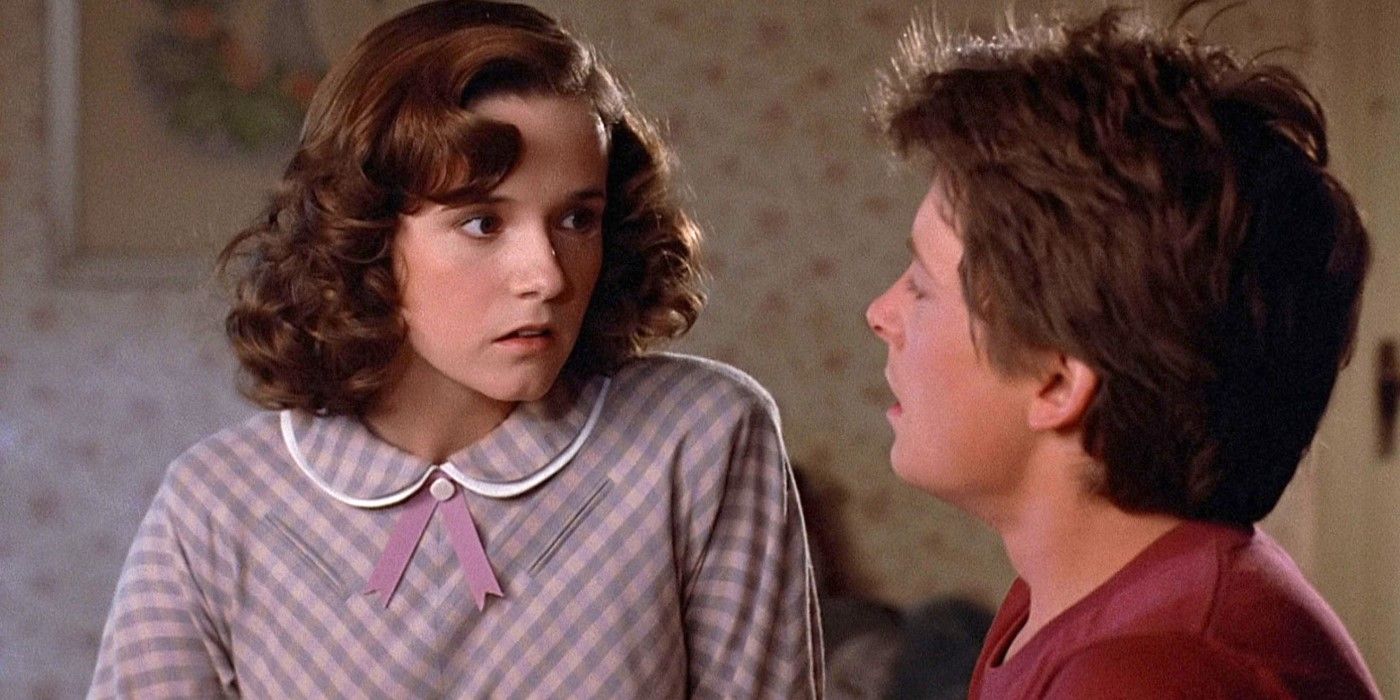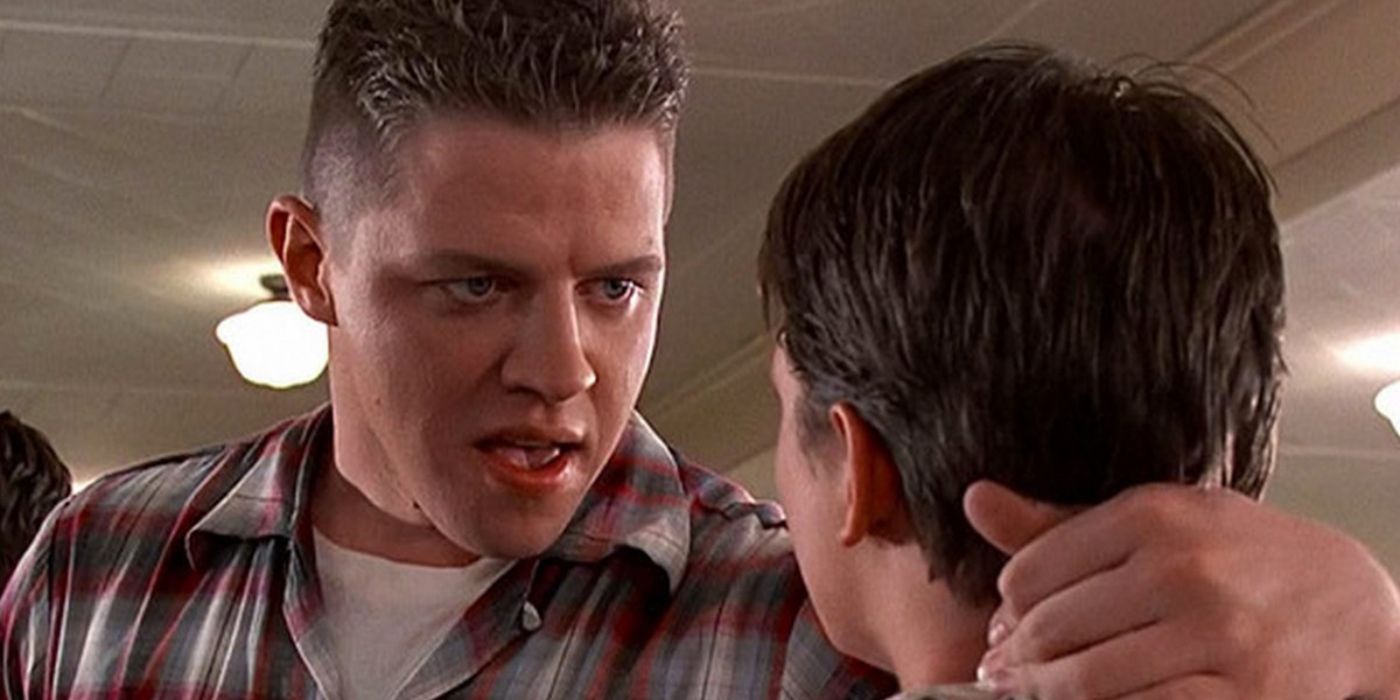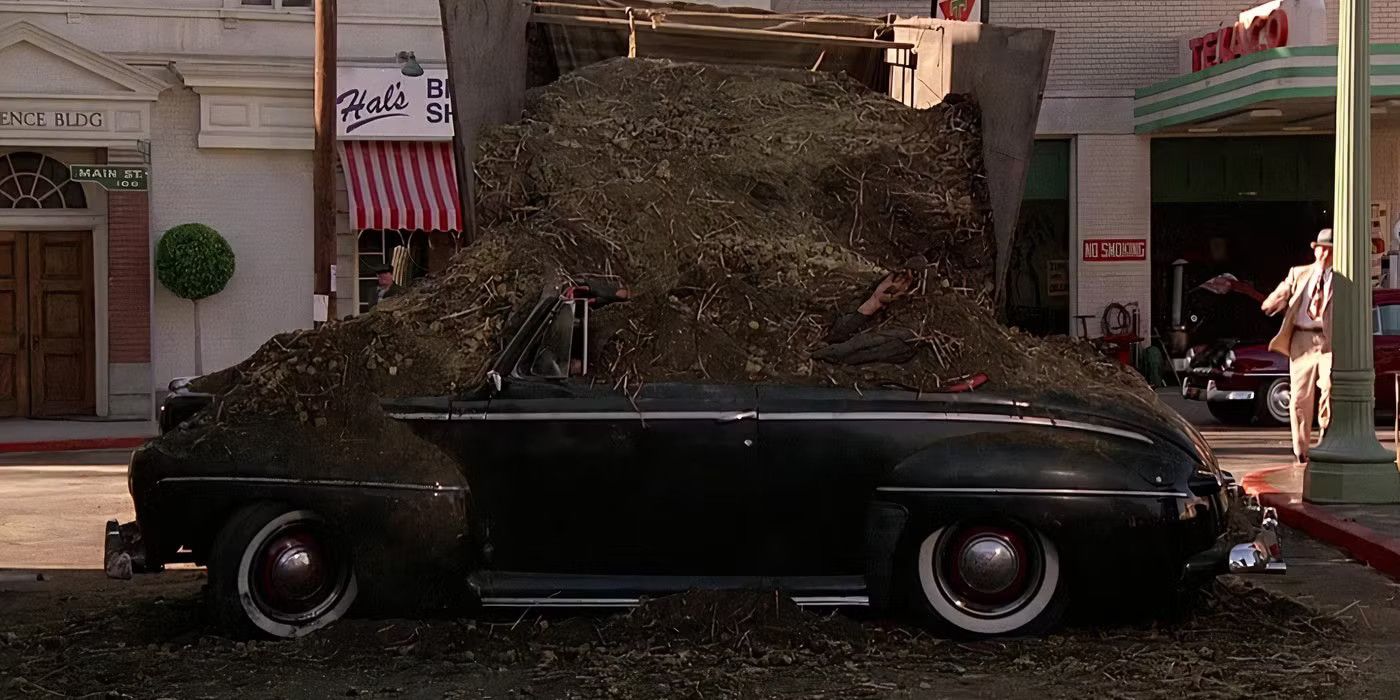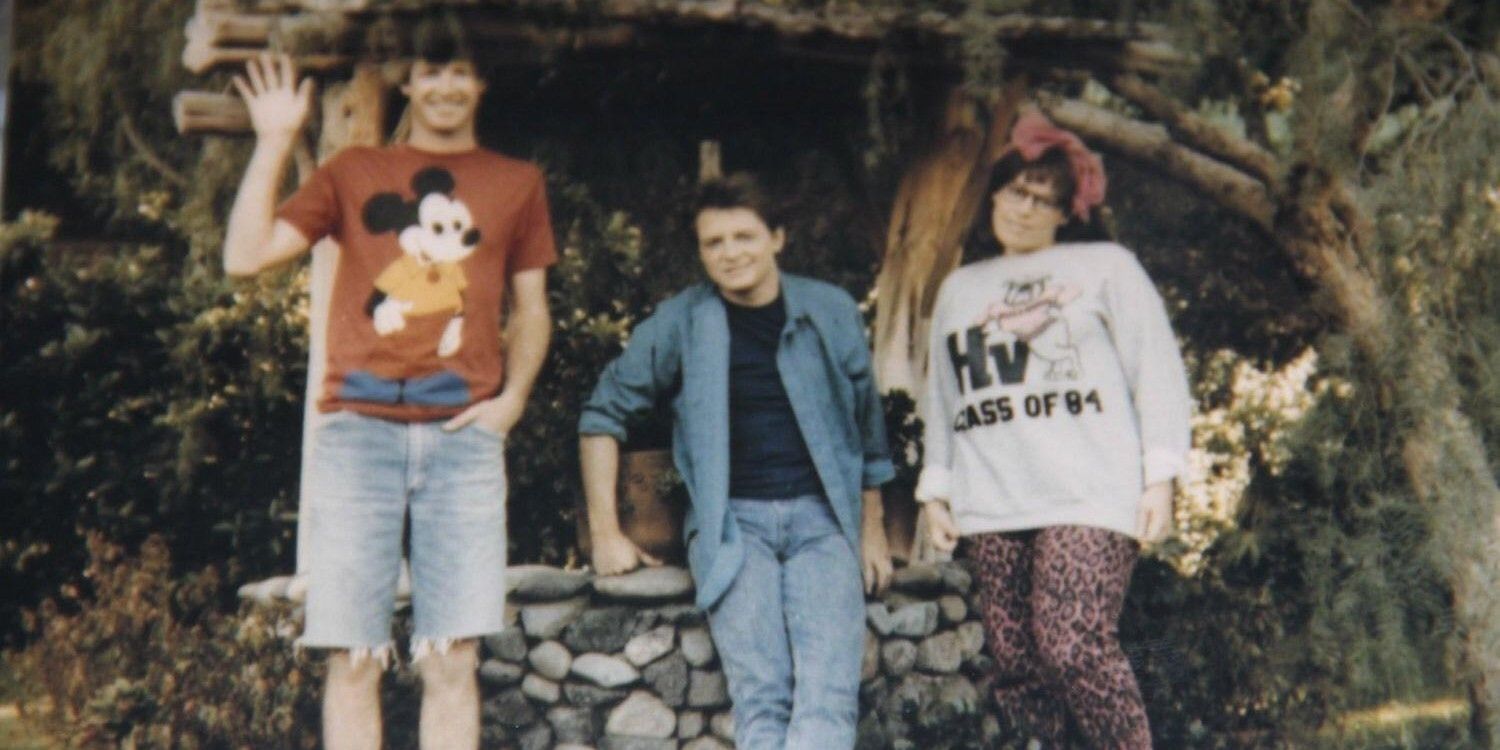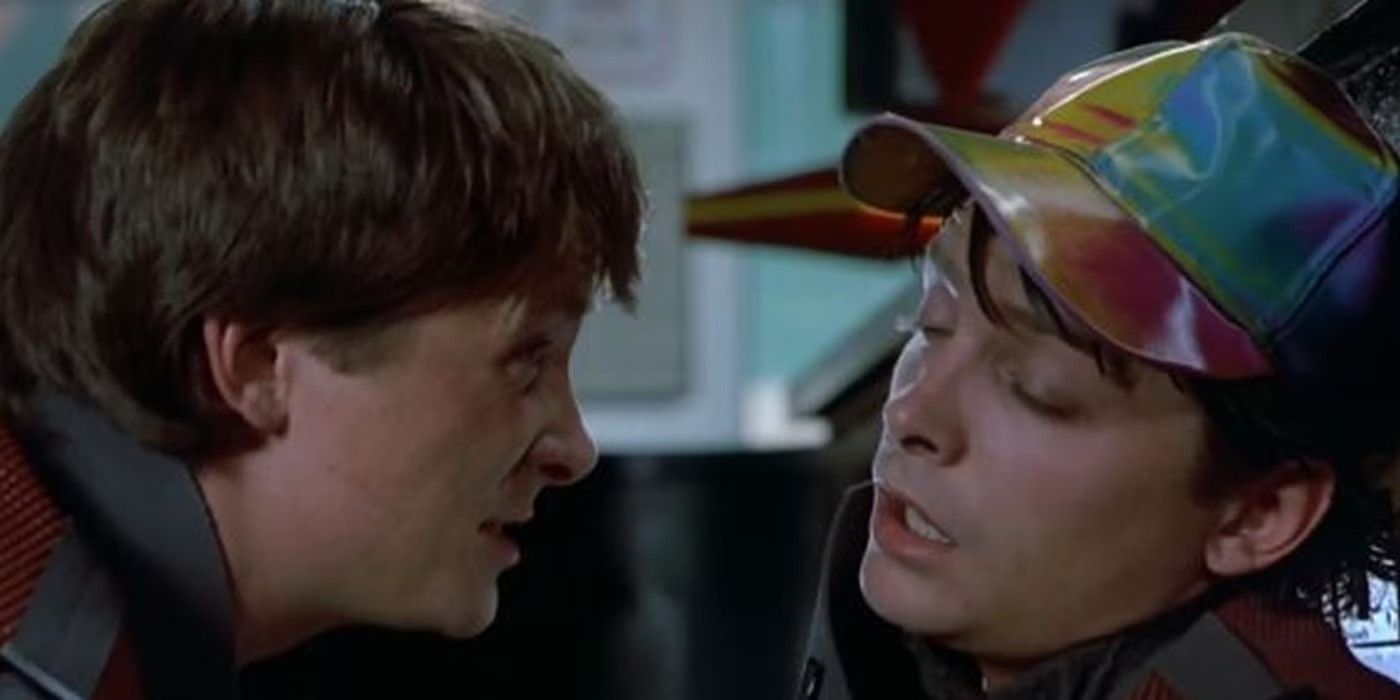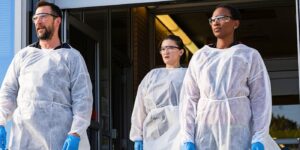10 Things That Happen in Every Back to the Future Movie
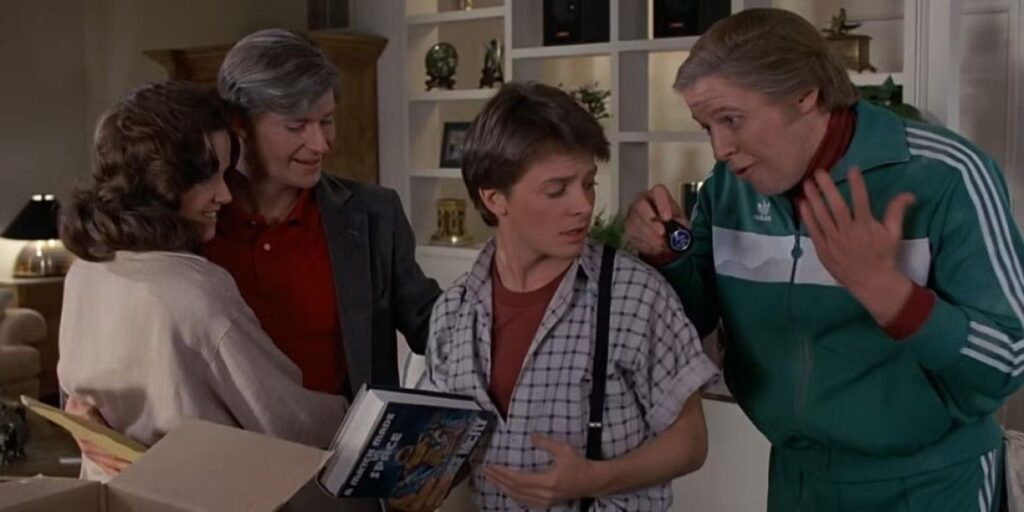
If it ain’t broke, don’t fix it. That’s a motto the creative duo of Robert Zemeckis and Bob Gale dutifully followed for their amazingly successful Back to the Future trilogy. Of the three Back to the Future movies, the first is the best — a sci-fi comedy so good that Zemeckis didn’t want to stray too far from it. One of the charms of Part II is how it recreates the climax of its predecessor and adds to it, and there are many other parts of the story that get repeated throughout the franchise. No doubt the comfort of the familiar and sticking to the formula helped all three of these movies make a pretty penny at the box office.
Some of these repetitions only show up in two of the three films, like setting up a sequel at the end (in the first two) or Marty easily succumbing to peer pressure when a bully calls him chicken (in the last two). However, there are plenty of themes, character dynamics, and plot points that we can safely say all three of the movies share. There are probably more than ten, but the examples below are significant enough to make fans of this famous trio keep an eye out for the others. Some are a bit more general than others, and each movie puts a spin on it, but they’re all very noticeable and link these movies together more than most other trilogies. Here are ten storytelling elements that repeat in all three Back to the Future movies, ranked based on how creative and nuanced their variations are.
10
Marty Helps Two People Fall In Love
There’s a rather important love story that Marty helps foster while dealing with the time stuff
Whether in the forefront or the background, all three Back to the Future movies have a love story. It’s what drives the first Back to the Future as Marty mistakenly gets himself run over by his grandfather’s car and spends most of the film trying to get his teenage mother to fall in love with George (instead of himself). He goes from giving his father advice to playing the guitar for the prom band so that his parents can have their special kiss. Then there’s Part II, which isn’t about getting two people to fall in love together until it revisits the climax of the first movie.
Part III sees Doc Brown falling in love with a woman named Clara Clayton (Mary Steenburgen). By suggesting to Doc Brown that Clara join them in the future (not to mention saving Clara with that hoverboard), Marty is able to help these lovebirds unite in the end. As much as it drives the plot for all three of the films, the romance stories are not the most inventive aspects of this beloved sci-fi franchise.
9
Anachronisms
Something shows up or gets mentioned that either hasn’t existed yet or is from long ago
One of the most consistently amusing details in the Back to the Future trilogy is its anachronisms (things that don’t belong in a specific period). A few in the first one include Marty’s Calvin Klein underwear (not to mention his alias) and his argument with Doc Brown over the future president. The most famous is probably his “Johnny B. Goode” solo, one of the greatest guitar solos in a movie, which goes from Chuck Berry’s ’50s style to a solo that undoubtedly belongs in the ’80s.
Since Part II begins with the end of the original entry, it immediately starts with something that doesn’t belong in the ’80s: the flying DeLorean from the future. Of course, the anachronism at the movie’s center would be the (surprisingly thin) almanac from 2015 getting used in 1955. A few elements in the third movie include the DeLorean in 1885 and Marty calling himself Clint Eastwood since cars weren’t invented yet and the legendary Western icon was still 45 years away from being born.
8
Marty Gets Woken Up by a Maternal Figure
Marty is awoken from bed and is surprised to find a woman closely related to him
The refrains throughout the trilogy are so ubiquitous that they can even come down to a specific scene. The most recognizable may just be the one that Sigmund Freud would love the most: Marty wakes up, thinks he’s home (the normal home), and finds his mother from either a different time or a different timeline at his bedside. In the first movie, Marty jolts awake when his mother tells him it’s 1955 — finding his pants gone and his high-school-age mother flirting with him.
It’s not a good sign when you expect to be in a normal house and hear the words “27th floor.” That’s when Marty realizes in Part II that he’s definitely not in a normal timeline. His mother’s cleavage is very distracting (another weird moment), and she isn’t dressed like any version of her he’s seen before. As for the third installment, Marty hears the words “McFly farm” and wakes up to his great-grandmother, Maggie. The sexual tension isn’t as pronounced here, but she does tell him not to forget that she’s married. Gotta keep these things consistent, apparently.
7
Marty Interacts with Relatives from Different Time Periods
Marty meets his future or past relatives
Throughout the trilogy, Marty meets enough members of his family tree to fill out a garden. In Back to the Future, Marty goes back in time and meets his parents when they were his age. George turns out to be a peeping Tom, and Lorraine checks out her future kid’s underwear. In terms of their demeanors, it’s telling how different she is and how similar George is to their future selves.
Then we get Part II, in which Marty meets his son, Marty McFly Jr. Well, his son’s too out of it to notice, but Marty tells the kid to shut up, steals his hat, and impersonates him. He also later sees his alternate-reality mother (which sort of counts). In Part III, he meets his relatives from all the way back in 1885: Irish-American immigrants Seamus and Maggie McFly. It’s fun to see Seamus, Marty’s future self, and Marty Jr. all played by Michael J. Fox. Likewise, all the Lorraines and Maggie are played by Lea Thompson. Great performances all.
6
Marty Freaks Out Doc Brown
Marty Meets Doc Brown From a Different Time, and the man is shocked
Every single movie has Marty coming up to Doc Brown, explaining that he traveled from a different time, and asking the baffled scientist for his help. The first time this happens results in one of the best quotes in Back to the Future, as Doc Brown is in such denial about the existence of time travel that he asks the boy about the future. He doesn’t like the answers, but Marty’s eventually able to convince him.
The second time around, the interaction happens at the very end of the movie; the Doc from 1955 who helped send Marty back to 1985 is celebrating that it worked when Marty from Part II runs up to him. The inventor is shocked, saying he just sent Marty back to the future, and winds up fainting from the reunion. Finally, the third movie shows Doc still in disbelief about the whole thing. He can’t even remember the conversation that led to his fainting spell, so Marty has to explain it all over again in a comically convoluted way. Luckily, he’s got that letter from 1885 to help.
5
Biff is the Main Antagonist
Either Biff or an identical relative is the bad guy
Thanks to Thomas F. Wilson‘s hilarious performance, Biff Tannen never gets old as the antagonist — no matter what form he takes. While we see Biff as George’s boss in the future, it’s the high-school Biff who’s the antagonist. Then, we see Biff’s grandson Griff in Part II, but the actual antagonists will be split between an elderly Biff who steals the DeLorean, a middle-aged Biff who’s gotten rich off a sports almanac, and the high school Biff from the first movie. There’s a lot going on.
It’s cool that we get to catch a glimpse of the third movie’s antagonist while Marty is in the middle of solving Part II‘s problems. That man would be Buford “Mad Dog” Tannen, who’s an ancestor of all the other Tannens that we’ve seen. In total, we get to see Biff at three different ages, Griff (his grandson), and Buford Tannen (his great-grandfather). Oddly, we never meet Biff’s son, but that just makes this universe all the more fascinating.
4
Marty Punches Biff
Marty heroically punches Biff (of any era) and gets away with it
Perhaps the most satisfying thing to happen in every movie, at some point, Marty punches Biff in the face. In the first movie, he trips Biff in a diner. When the much taller teenager gets back up, Marty does the silly trick of pointing away, asking “What’s that?” and punching Biff in the face. Then he pushes the bully’s friends out of the way and runs off. Great stuff, and the second movie puts a fun spin on things: Biff has already been clocked by George, so Marty joins the group of people surrounding him. When Biff starts to come to, he stares up at Marty and exclaims, “You!” So Marty easily knocks him out and then steals his almanac. Good stuff.
The third movie turns it into an homage to one of the best Westerns of all time: Sergio Leone‘s A Fistful of Dollars. Marty gets shot in his duel with Mad Dog Tannen, and everyone thinks he’s dead. When Buford approaches, though, Marty kicks the gun away, reveals he’s wearing a metal plate, smacks Biff across the face with said plate, and punches the guy four times in a row. That plate alone should have been enough to knock him out, but who doesn’t want to watch Biff get punched in the face?
3
A Mouthful of Manure
Biff (or a relative) crashes into a comical amount of manure
Speaking of punching Biff in the face, Marty runs away from Biff and winds up getting pushed by Biff’s car while riding a stolen skateboard. Things aren’t looking too good for our hero, but then Marty tremendously jumps into their car, hops past all the shocked members of the gang, and then jumps out of the car through the back and lands on his board. The car runs into a truck full of manure, and the bullies get buried in it. Classic scene.
So they do it again in Part II. Marty gets chased by 1955-Biff in a tunnel (hoverboard vs. car), but Doc tosses a line of pennant flags down from his flying DeLorean. As Marty grabs on and escapes, Biff (who has already run his car into manure in this timeline) runs into the same kind of truck as last time. It’s great when he spits out some of its contents and yells, “Manure! I hate manure!” In Part III, Marty punches Buford face-first into a wooden wheelbarrow of green manure. These amusing spins on the formula help make each part of the trilogy among the funniest time-travel movies ever made.
2
An Object’s Appearance is Altered
As the timeline changes, so too does at least one object directly related to the film’s events
One of the most iconic images in Back to the Future has got to be the photograph in which Marty and his siblings (Dave and Linda) disappear. Since they’re the McFly children, their existence depends upon their parents falling in love. When Marty notices his brother and sister disappearing, he sees that something is terribly wrong. Interestingly, Marty getting hit by the car doesn’t make the siblings immediately disappear, but it’s probably because the night of the big dance is the final point when the timeline can be fixed.
Watching Marty start to vanish on stage is excellent, so it’s no wonder that the other two movies rework this kind of tangible way of denoting how well Marty and Doc’s attempts to fix the future are going. Part II has a matchbook, along with a newspaper showing George McFly’s death and Emmett Brown’s institutionalization. Part III shows a picture of Doc Brown’s tombstone, which becomes ambiguous when the absence of a name suggests that someone else may still die. These inanimate yet ever-changing objects help the best sci-fi comedies of all time feel so unique, and the films wouldn’t be the same without ’em.
1
Time Travel
Marty and Doc travel to the future, the past, or both
It would make sense that something so integral to the trilogy’s concept is where the films demonstrate the most creativity: time travel. In the first movie, Marty accidentally goes back in time to 1955 and spends most of the story trying to return to 1985. The second movie steps things up a notch: we travel to 2015, a darkly compelling alternate-1985, and then the 1955 from the first movie. Then we get to the third installment, which takes things all the way back to 1885.
One of the best moments is when we catch a brief glimpse of Buford Tannen in Part II (some nice foreshadowing for Part III). Part II is also the most ambitious because of how it playfully folds its events in with the climax of the first movie. The letter that Marty receives from 1885 is cool, too, helping to make this trilogy Michael J. Fox’s most legendary contribution to cinema. As for Part III, Marty starts in 1955, goes to 1885, and jumps forward a century — only to behold Doc Brown riding a Time-Traveling train. It’s bonkers, paradoxical, and a joy to watch every time.

